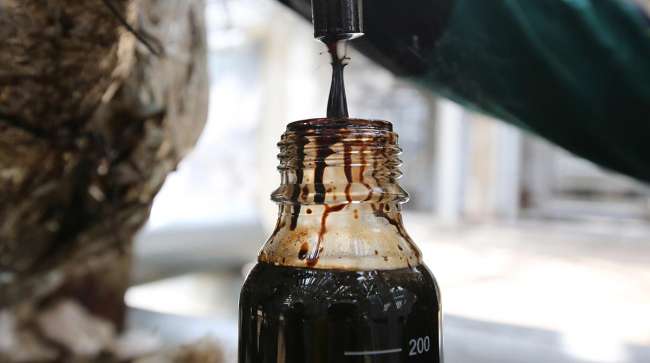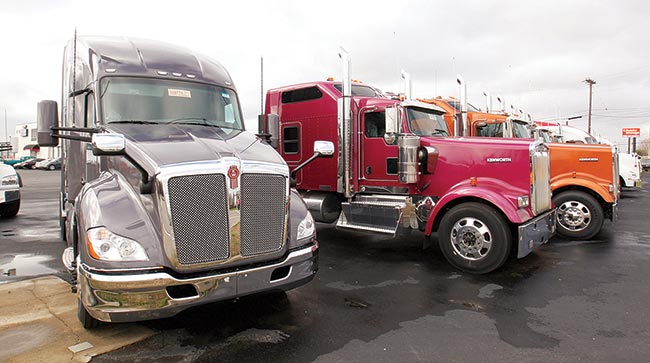Senior Reporter
Diesel Slips 3.1¢ to $3.105 a Gallon

[Stay on top of transportation news: Get TTNews in your inbox.]
The U.S. average retail price of diesel dropped 3.1 cents to $3.105 a gallon, the Department of Energy reported June 10.
Crude oil prices ranged from $51 to $53 a barrel during the week, initially falling with mounting inventories and then surging after an attack on two tankers carrying oil out of the Middle East on June 13.
U.S. average #diesel fuel price on 6/10/2019 was $3.105/gal, DOWN 3.1¢/gallon from 6/03/19, DOWN 16.1¢/gallon from year ago https://t.co/R1MtsQP7Pt #truckers #shippers #fuelprices pic.twitter.com/uy3mXJFosy
— EIA (@EIAgov) June 11, 2019
Diesel costs 16.1 cents less than it did a year ago when it was $2.944, DOE said.
Regional diesel fell everywhere across the nation. The regional average that fell the most: 5.1 cents in California to $4.058 a gallon.
Also, the national average price for regular gasoline plunged 7.5 cents to $2.732 a gallon, DOE’s Energy Information Administration said.
Gasoline’s national average price has fallen for five consecutive weeks, dropping a total of 13.4 cents over that period.
The price of crude accounted for 51% of the cost of a gallon of diesel fuel in April, the latest available figures, and 56% of a gallon of regular gasoline, EIA said.
Meanwhile, the ongoing battle for better fuel efficiency has been a staple of the trucking industry for a number of years. “However, with the advancements in technology, and aerodynamics of trucks, the industry as a whole has seen significant changes and improvements over the last decade,” the financial services arm of truck maker Paccar Inc. posted online.
#ThisWeekInPetroleum - EIA forecasts lower crude #oilprices, but expected inventory declines present considerable uncertainty https://t.co/evjUhHUecx pic.twitter.com/lUZJyrko0K — EIA (@EIAgov) June 12, 2019
“Overall, mpg is mainly about the driver, but here are some components that can be implemented into a daily driving routine that will help reduce fuel consumption, increase fuel economy, and save money,” Paccar Financial continued. For example, it identified:
• Using cruise control to keep the truck moving at a steady pace. Less acceleration conserves fuel. As a rule of thumb, for every 1 mph that speed is increased, it can decrease fuel economy by about 0.1 mpg.
• Block shifting with a manual transmission uses the truck’s revolutions per minute to skip gears in order to get to the more efficient higher coasting, or highway, gears. For example, going from second gear to fifth, skipping the gears in between.
• Reducing the overall weight can decrease fuel consumption tremendously. This can be done with the truck and trailer by choosing options such as lightweight parts. According to the federal SmartWay program, reducing 3,000 pounds from a truck can save anywhere from 200-500 gallons of fuel a year.
• Reducing engine idling can save almost one gallon of fuel an hour. Consistently idling an engine can also increase engine maintenance costs, while simultaneously shortening engine life. Plus fumes, and harmful emissions can pose a serious health hazard.
• While certain trucks have more aerodynamic features than others, there are still a number of options that can be considered apart from the cab. Using single wide-base tires and rims is lighter than two standard tires and rims. Total weight saving on average for a typical combination truck using single wide-base tires on its drive and trailer axles ranges from 800 to 1,000 pounds to reduce fuel consumption or increase cargo capacity. Other options for equipment include: roof fairings, cab extenders, side fairings and front bumper air dams. Features like these can improve the overall fuel economy by up to 15%, and save a typical combination truck an average of 2,400 gallons of fuel a year.

Kenworth trucks on a lot. (John Sommers II for Transport Topics)
Paccar’s brands include Kenworth Truck Co. and Peterbilt Motors Co.
A first look at forecasts from consultants and traders for oil supply and demand balances show persistent surpluses, not the deficit that was expected to underpin rising prices, according to Bloomberg News.
“The balances for 2020 were already worrisome, and the downgrade in demand we are contemplating put them potentially in the ugly category,” Roger Diwan, an OPEC watcher at consultant IHS Markit, told Bloomberg.
West Texas Intermediate crude futures on the New York Mercantile Exchange closed at $53.26 on June 10 compared with $53.25 per barrel June 3.
Crude sank to $51.14 on June 12 before climbing the next morning to $53.01.
“The swings up and down show you that neither the bulls nor the bears have control of the market,” senior analyst Phil Flynn of Price Futures Group Inc., told Bloomberg.
In the Middle East, attacks on two oil tankers, including a Japanese-operated vessel, were the second in a month to hit ships near the Strait of Hormuz chokepoint, through which about 40% of the world’s seaborne oil travels.
The attacks come amid heightened tension between Iran and the United States. The prospects of a conflict have spiked since the Trump administration tightened its sanctions on Iranian oil exports in early May, according to Bloomberg. President Donald Trump last year abandoned the 2015 deal that was meant to prevent Iran from developing a nuclear weapon and reimposed sanctions in a bid to force the Islamic Republic to rein in its military program and proxy militias.




